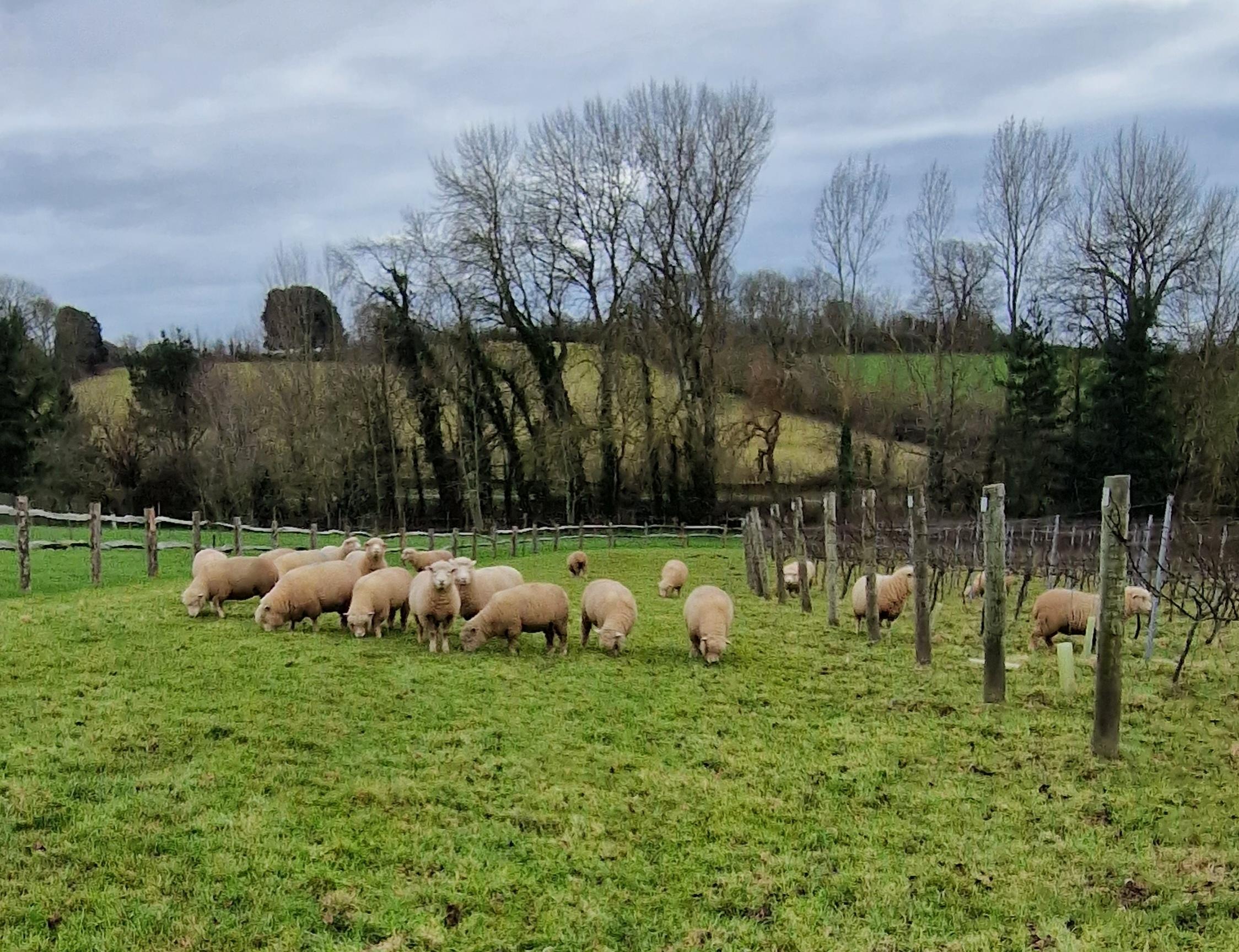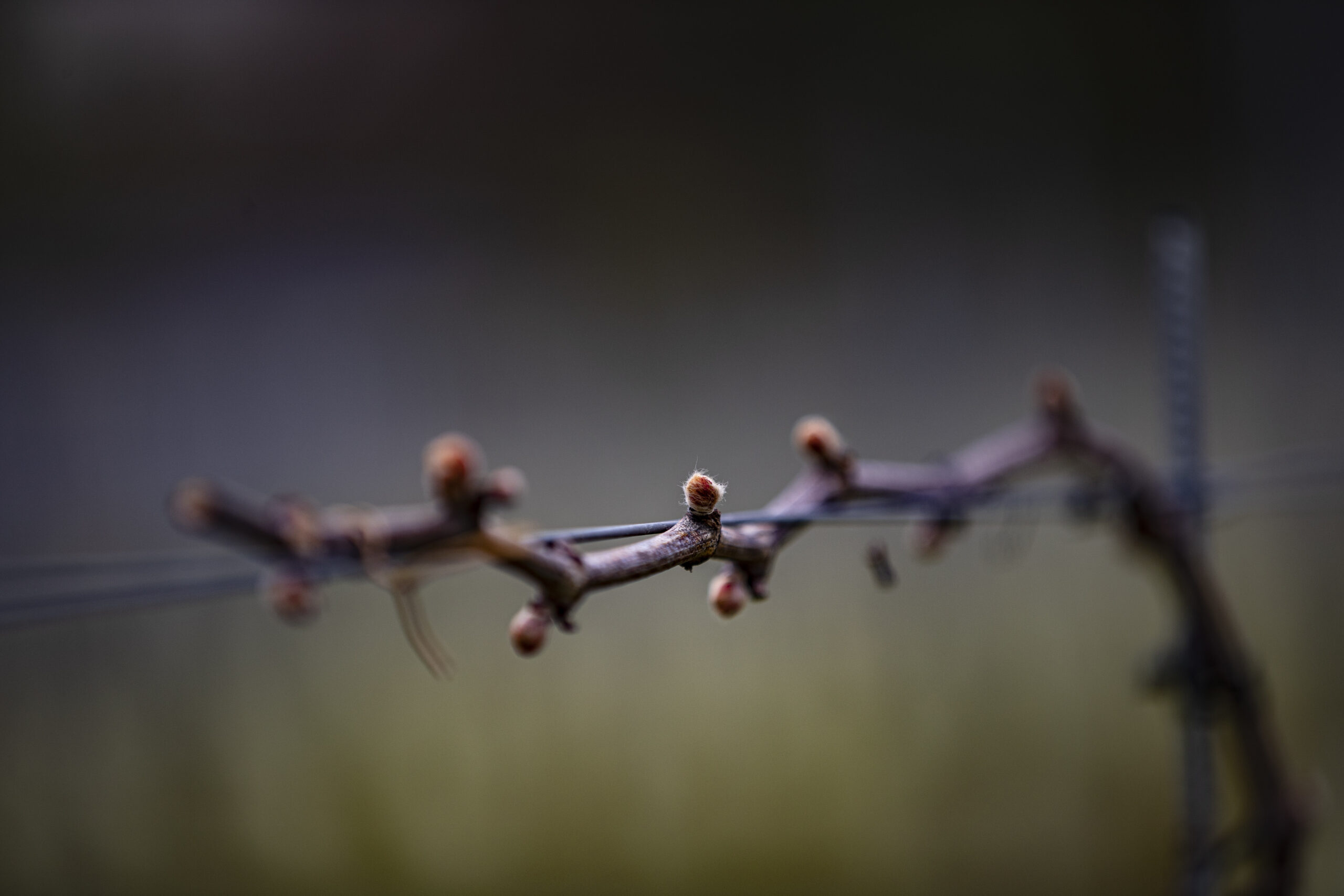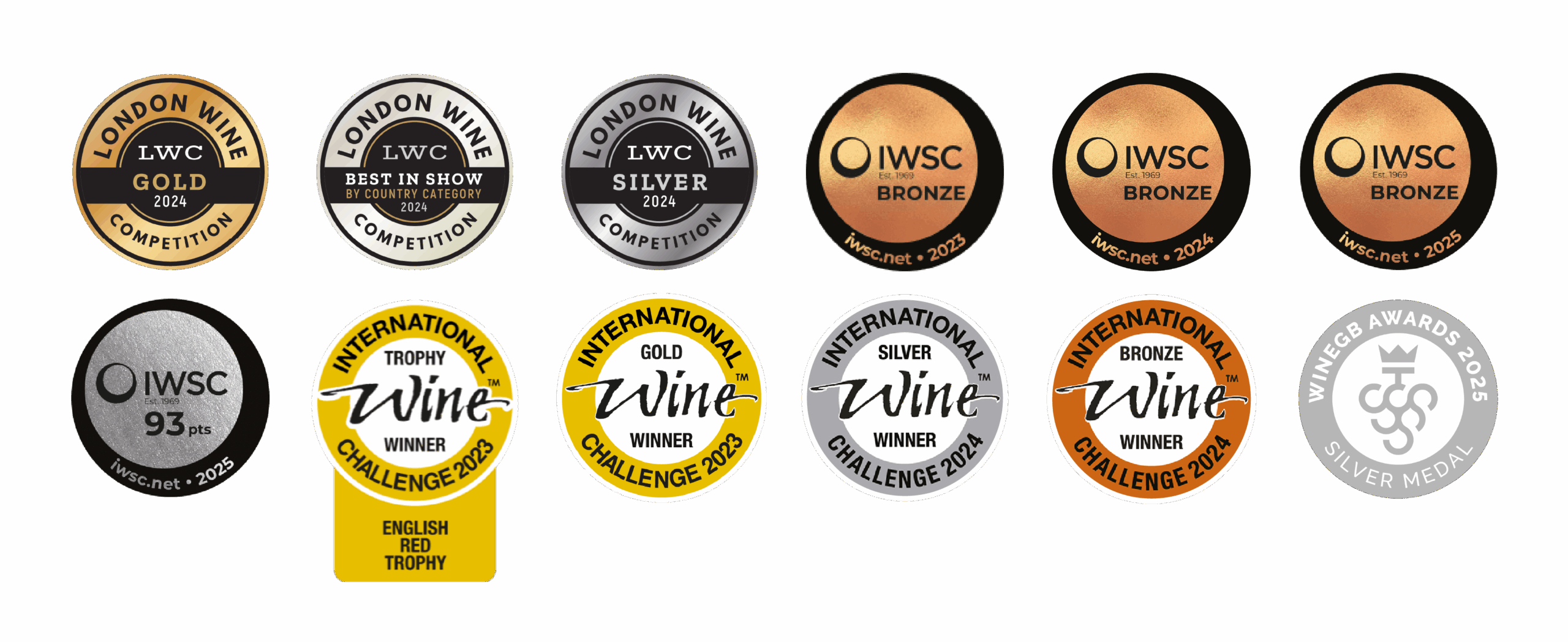Your basket is currently empty!
By Steve Edwards, Operations Director / Vineyard Manager
The flock of Poll Dorset Sheep from Ben Mortimer’s farm across the estuary at Powderham were moved to the vineyard in late last November until mid-February. They have proven to be a big success again this year keeping the grass across the site very short in addition to the manure, a natural fertiliser which provides soil nutrients and encourages the growth of clover whose roots transfer nitrogen from the atmosphere to the soil and therefore reduce our need to apply a nitrogen fertiliser to the vineyard soil.

The winter pruning team were on site from 24th February for a working week to prune the vines first then to do the bulk of the tie down to the bottom trellising or “fruit cane” wire. In advance of this, I completed all the necessary vineyard maintenance tasks in plenty of time to get ready for the season. These included fixing any damaged trellising wires or end-post wire anchor ropes which tension all of the trellising wire across the vineyard plus all of the vineyard equipment annual servicing.
Ben Mortimer’s sheep were removed 17th February, a week before the winter pruning started. We then decided to remove the vine prunings to avoid the risk of infection to this year’s crop. After a relatively warm and wet winter, we had no hard, cold snaps which would normally kill off any disease spores lying dormant in the vines. In other years, the prunings would typically be mulched into the vineyard rows.
The fruit cane “tie down” to the bottom trellising wire was completed 17th March. Budbreak occurred on 4th April, over two weeks ahead of last year which occurred on the 19th April. Budbreak was uniform across the vineyard this year and we extended double guyot vine training in the INRA548 and FR155 Chardonnay clones. The Chardonnay looked particularly promising in terms of the potential yield. This was an area of the vineyard that suffered last season from a lower-than-expected yield hence the decision for the double guyot vine training. Normally we have single guyot vine training across the site.
After securing the vine trunks to the steel supports and ensuring all of last year’s top trellis wire clips had been removed, the next task was vine trunk bud rubbing on 14th April followed by unclipping the bottom wires and then the vine crown and fruit cane shoot thinning which started on 2nd May.

We had a very good start to the 2025 growing season, with great weather which supported the suppression of disease and ensured a successful budbreak, vine flowering which started on 15th June and then fruit set at the beginning of July, both of which went very well.
The end of July signals the back end of “tucking in”, which is basically straightening and splitting the fruit canes, clipping them whilst upright to the trellising wires and then trimming the vines. I was constantly monitoring for disease risk and at that point had no sign.
There was a little nutrient deficiency but the vines had some water over this period and were in good health. Our agronomist John Buchan visited the site and was pleased with what he saw.
Late August, I conducted a bunch count to determine the yield which was a help to the winery in advance of the harvest for the press time allocation and for us regarding the labour requirement at point of picking. The Meunier was looking a good size and weight, the Chardonnay very good, and the Pinot Noir excellent, so we were able to anticipate a decent yield. At this point, we anticipated the first week in October for picking. However, if the fine weather were to continue it could well be earlier and bodes well for both sparkling and still wine production from this vintage.

The final stages of fruit ripening known as Verasion, is determined by the colour turn on the grapes and the softening of the berries which started on August 2nd a full calendar month ahead of last year. At this stage, I managed the canopy to allow maximum sun exposure for the ripening fruit and constantly monitored for disease which we still had no sign of. There was potentially a risk from increased activity of SWD fruit fly in the vines, but I had had the traps out for the past month which I reviewed twice weekly and had seen very few this year in addition to even fewer wasps which was also unusual.
The end of August was the starting point for looking at sugar levels using the refractometer and following this the first bunch samples from all clones across the vineyard went over to the laboratory at Lyme Bay Winery on 3rd September and on regular days thereafter before the harvest dates were agreed. Clem Yates MW, the Lyme Bay winemaker came on site to meet with Michael and myself and was very excited looking at the final stages of ripeness for the grapes in the vineyard especially given that this year general fruit quality industry-wide appears to be a little uneven.
Due to the very warm, dry weather this year which bought on early ripeness here at Lympstone Manor, we decided to pick quite early this year, firstly for the sparkling wine grapes on 15th September which is the earliest we have ever picked by over two weeks. This first harvest for the sparkling wine grapes required slightly less fruit ripeness than the grapes for the still wines. We picked 12.4 tonnes of fruit which by varietal was all the Meunier, half of the Chardonnay and two thirds of the Pinot Noir. The fruit ripeness in relation to sugar and acid levels were exactly as the winemaker had requested prior to harvest. We had 6.75 tonnes of fruit remaining on the vines for the second harvest which took place on 2nd October.

Steve Edwards, Operations Director / Vineyard Manager
In summary, 2025 was a very good growing season here in the vineyard with beneficial weather and no disease. The only challenge has really been very little rainfall from March through to September which did affect the bunch weight and therefore we experienced a slightly lower yield, however the fruit quality was superlative.
Harvest Dates and Quantities:
Sparkling Wines – harvest dates Monday 15th – 17th September inclusive
Weights – CH: 3450kg, PM: 3160kg, PN: 5790KG
Total – 12,400kg
Still Wines – harvest date Thursday 2nd October
Weights – CH: 3210KG, PN: 3540KG
Total – 6,750kg
Total grape weight – 19,150kg





